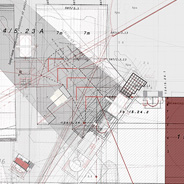Ziyuan (Oliver) Zhu
High City, New Acropolis | Athens, Greece | Unit 21 | 2019 Click to see Design Realisation Literal transparency and adjacency in the architecture of government building often equated with figurative transparency, openness, accessibility and greater democracy. This is evident in buildings, such as The Casa del Fascio (Como, Italy) and The Reichstag. The project took inspiration from the public and political building in ancient Athens, such as Acropolis and
